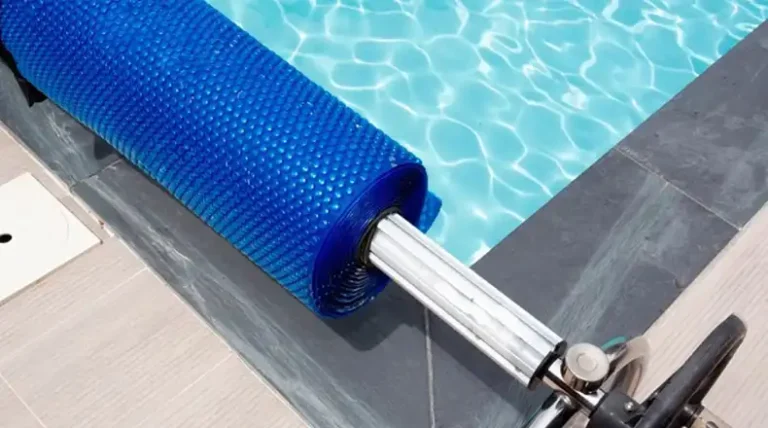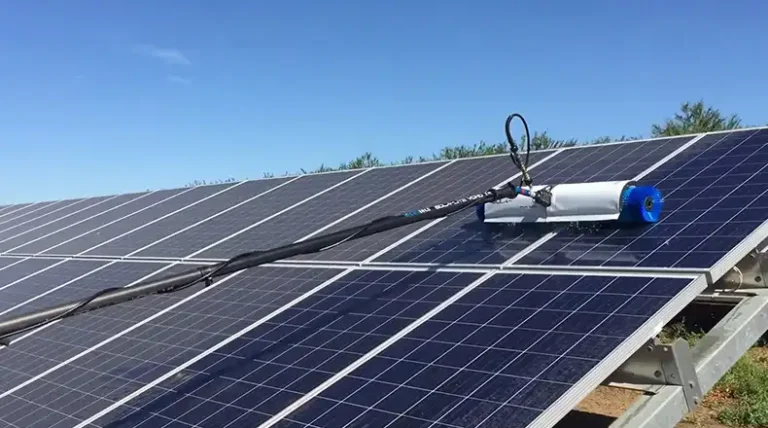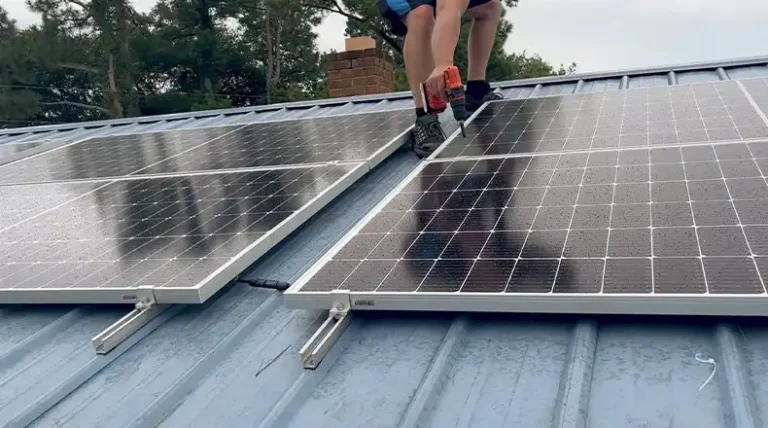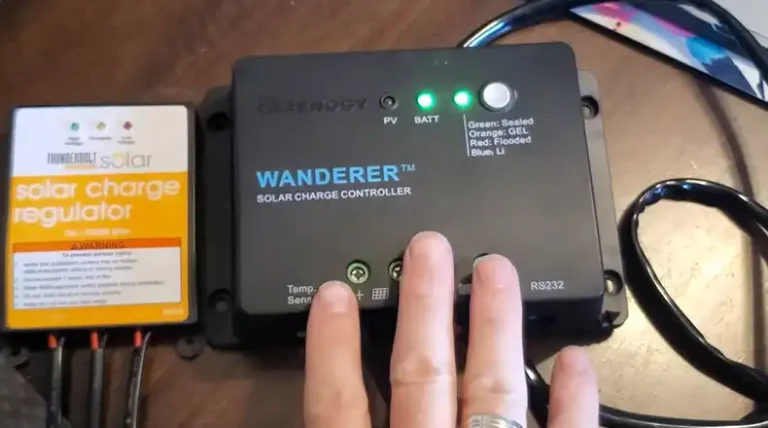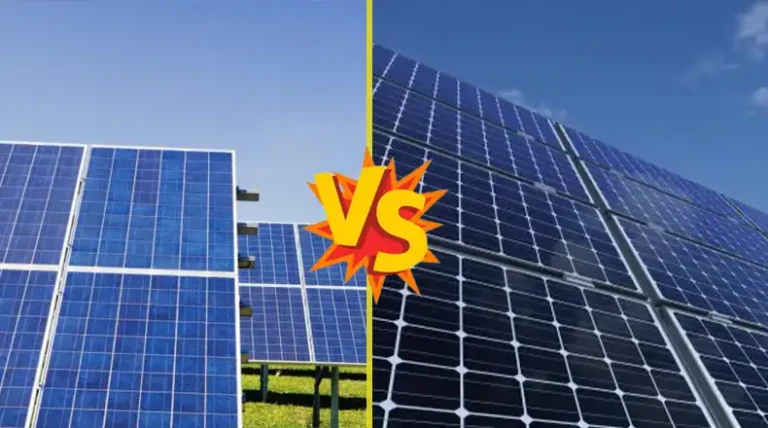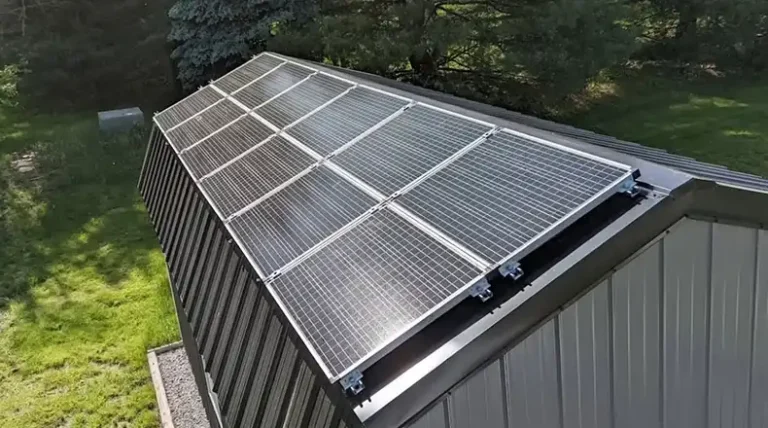How to Clean Solar Panels on a Roof Automatically
Keeping your rooftop solar panels free of dirt, dust, pollen, and other debris is essential for maintaining optimal performance. But climbing on the roof to manually wash them is tedious, risky, and often leads to inconsistent cleaning. The solution? Automating the solar panel cleaning process.
Automatic solar panel cleaning systems take the grunt work out of keeping your PV modules debris-free. Robotic cleaners, spray washing equipment, electrostatic dust prevention technology, and others exist to scrub your solar panels clean with minimal effort.
In this guide, we’ll explore the various options for automated solar panel cleaning and key factors to consider when implementing such a system for roof-mounted arrays. Let’s shed some light on smarter ways to keep your solar investment dust-free!
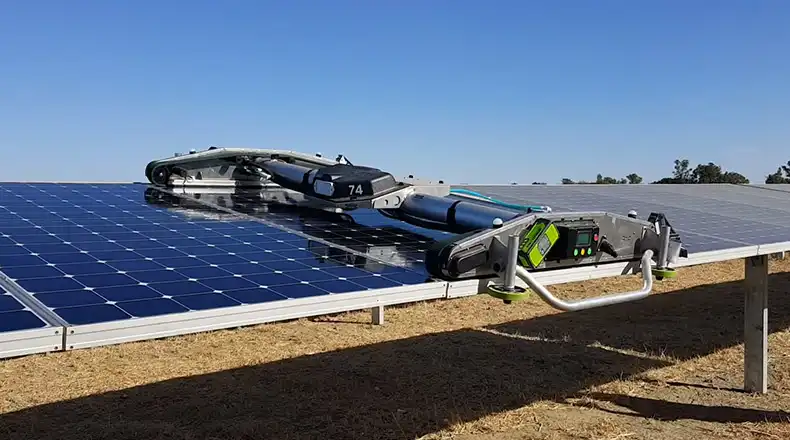
Types of Automated Solar Panel Cleaning Systems
Now let’s explore some leading technologies for automated solar panel washing and debris removal:
Robotic Solar Panel Cleaners
Robotic cleaners are autonomous drones that drive across solar panels to clean them. Popular models include:
- Ecoppia E4 – dual-sided rotating brushes sandwich and scrub panels clean.
- Solarbrush Orion – onboard cameras scan for dirty panels to target cleaning.
Steps to implement robotic cleaners:
- Select a model compatible with your panel size, shape, and mounting.
- Install docking stations for the robots to recharge and park safely.
- Program cleaning cycles based on weather patterns and seasonal debris buildup.
- Monitor performance and inspect robots periodically for maintenance needs.
Pros: Extremely thorough cleaning, ideal for remote sites.
Cons: Relatively high cost, maintenance of moving parts.
Automatic Solar Panel Washing Systems
These automated rigs spray water or cleaning fluid onto solar panels on programmed cycles. Components include:
- Hoses/pipes to supply water to spray nozzles or brushes
- Nozzles positioned above or alongside panels
- Filters and tanks to hold cleaning fluid
- Drainage system to collect runoff
Implementation steps:
- Install hoses, nozzles, and any brushes/wipers securing to roof and panels.
- Connect the water supply line or holding tank.
- Program spray cleaning schedule and cycles based on weather patterns.
- Test fluid drainage system for adequate removal.
Pros: Effective debris removal comparable to deep manual washing.
Cons: Requires water access, cleaning fluids, and drainage system.
Electrostatic Dust Prevention
These systems establish an electromagnetic field across solar panels to repel dust particles before they settle.
Implementation steps:
- Install thin wires evenly across the tops of solar panels.
- Connect wires to a solar-powered electrostatic generator.
- Power unit on to activate the dust-repelling electromagnetic field.
Pros: No moving parts or fluids needed, ultra-low maintenance.
Cons: Limited effectiveness on stuck-on grime or heavy debris.
Soap-less brushes and sponges
Some automated washing systems use special brushes or sponges that can scrub away dirt without needing any cleaning solutions. The bristles are engineered to dislodge particles with just water.
Steps to implement:
- Install brushes or sponge wipers alongside or above panels.
- Connect to water source.
- Program cleaning cycles to activate brushes and water spray.
Pros: Eliminates the need for soap or chemicals.
Cons: May be less effective than soap solutions on heavy debris.
Benefits of Automatic Solar Panel Cleaning Systems
Compared to manual cleaning, the automated system has a lot of benefits. Here are some of them –
Efficiency improvement:
- Regularly cleaned solar panels can generate up to 30% more energy than dirty ones. This is because dirt and grime can block the sunlight from reaching the solar cells, reducing their efficiency.
- Increased energy production can lead to significant savings on your electricity bills.
Reduced maintenance costs:
- Automatic cleaning eliminates the need for manual labor, which can save you time and money on professional cleaning services.
- Manual cleaning can be dangerous, especially for rooftop installations. Automatic systems eliminate the need for workers to climb on roofs, reducing the risk of accidents or injuries.
Enhanced safety:
- Automatic systems minimize the risk of accidents or injuries associated with rooftop cleaning.
- By eliminating the need for workers to climb on roofs, automatic systems can also help to protect your property from damage.
Extended lifespan:
- Proper cleaning protects solar panels from damage caused by dirt buildup, extending their lifespan and reducing the need for replacements.
- Dirt and grime can scratch and damage solar panels, reducing their efficiency and shortening their lifespan. Automatic cleaning systems can help to prevent this damage by keeping the panels clean.
Factors to Consider When Choosing an Automatic Solar Panel Cleaning System
There are several factors that you will need to consider before going for an automated cleaning system.
Type of solar panels:
- Different panel types may require specific cleaning mechanisms.
- For example, some panels may be more sensitive to water damage, so a water-based cleaning system may not be the best option.
Roof configuration:
- The system should be compatible with the roof’s layout and angle.
- Some systems are designed for specific types of roofs, such as flat roofs or sloped roofs.
Location and climate:
- Consider the frequency and intensity of rainfall, dust, or pollen in the region.
- The type and frequency of cleaning will need to be adjusted based on the local climate.
Maintenance requirements:
- Choose a system with minimal maintenance needs and easy access for cleaning components.
- Some systems require more maintenance than others, so it is important to choose a system that you can easily keep up with.
Cost:
- Evaluate the upfront cost and ongoing maintenance expenses.
- The cost of an automatic solar panel cleaning system will vary depending on the factors listed above. It is important to get quotes from several different companies before making a decision.
Wrapping Up
While manually washing solar panels works, automated cleaning solutions deliver superior consistency, efficiency, and results. Robotic scrubbers, spray washing rigs and electrostatic systems let you take a hands-off approach to keeping your PV modules debris-free and operating at peak productivity. Evaluate your particular site considerations and cleaning needs to select the right automation technology that provides the best return on investment. Your panels will thank you for the dust-free care!
Factors and Benefits are generated by using AI. Seems relevant to me, if anyone finds it irrelevant, then kindly remove the headings, thank you!

